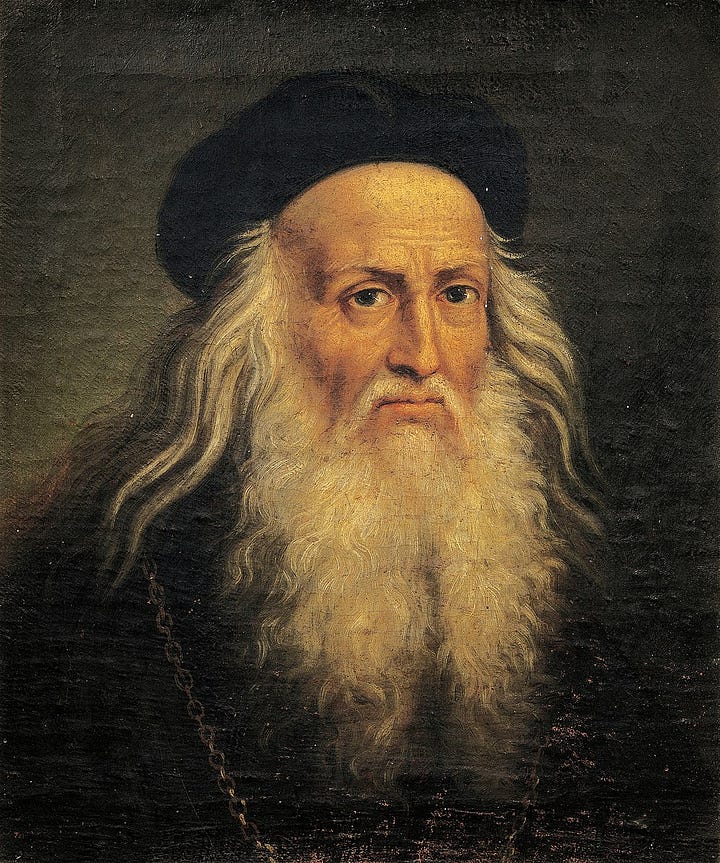
There is no point in going to all the trouble of making a video (or a documentary or a film for that matter) if no one is going to watch it. Videos and films that work are stories done mostly in pictures that resonate with people; that viewers can connect with on an emotional basis.
The secret to creating a video or film that people will immediately and innately connect with (as opposed to feel they have to watch because it is ‘important’) is locked, in the way it was shot. Shoot it correctly and it will immediately draw in your viewers.
What do I mean by shoot it correctly? What I don’t mean is well-lit and well-framed (though these are important), they are not the key to making a deep and lasting connection to viewers.
Then what is?
I am busy reading Leonardo DaVinci by Walter Isaacson, and as I do so, I cannot but be struck by the lessons DaVinci has to offer today’s video makers.
DaVinci’s paintings and his sculpture were a great leap forward in Renaissance painting. His drawings and paintings seemed to leap off the canvas. To a society steeped in a rather flat and lifeless medieval art, DaVinci’s work was somehow very different. It resonates with the viewer in a way that prior paintings simply did not.
DaVinci was both artist and scientist — perhaps one of the greatest scientists in human history. Unlike his contemporaries and those who had gone before him, DaVinci was mesmerized not just by how things looked, but why they worked. He was assiduous in his research, whether the subject was a flower or the human body. He dissected both to learn the secrets that nature had placed there to see if you looked.
Thus, when he painted or drew, he was extremely careful to represent and replicate plants, trees, animals, and people that ‘worked’, that were real; that were pure representations of how they appeared in the real world. This included both form, but also the way light interacted with them and with our eyes. In his codexes, he wrote hundreds of pages on how we perceive light and how light interacts with the subject and with us.
As a young apprentice, DaVinci was taken into the workshop of Andrea del Verocchio, where, at the age of 14, he was given his first assignment, to fill in a few details on a Verocchio work, Tobias and the Angel.
You see how flat and lifeless the figures are here. But look at the fish that Tobias is carrying. This was painted by the 14-year-old DaVinci. Note how the light glints off the fish, and how the scales are perfect. It resonates with us because it looks like a fish, and it looks like a fish carried in the light because that is how it appears in real life.
DaVinci was the first artist to marry scientific inquiry with art. Why things work in real life replicated in paint; There is a great PBS video on this, How Leonardo daVinci Used Anatomy to Inform His Paintings. It was a practice that he followed all his life and it very much changed the world of art.
When it comes to video making, we can learn a lot from DaVinci.
The films and videos that connect best with viewers; those that resonate and engage an audience are those that make the viewer feel that they are not watching a video, but rather living in the story that they are being shown and told. To make the viewer feel they are ‘in’ the story means that it has to be shot in a way that, like DaVinci, works and reflects the way we see the world ourselves.
The more you can shoot video the way that you yourself see the world (and edit it together), the more the viewer will feel that they are captured by the film and be drawn into it.
In the TV news business, which is, because it is on television, a fundamentally visual medium, no one is drawn into shots of reporters doing stand-ups, or lines of police tape to cover the story. These alienate the viewer. Instead, the viewer must be drawn into the story visually. The visuals must work because they replicate the way you would see the event if you were there yourself.
You have no doubt seen ‘documentaries’ on The Grand Canyon in which the camera slowly sweeps across the Canyon from one side to the other while a narrative voice says something like “The Grand Canyon, nine million years in the making” as the camera continues its very slow pan. Ever been to the Grand Canyon? No one stands on the edge and slowly pans across, moving their head imperceptibly from left to right.
The way you see the world is the way you should film the world and then edit the world for others to see. That’s the lesson from DaVinci.
Here is a lovely film, done for KPIX News in San Francisco by Rick Villaroman, entirely shot on an iPhone. Note how you feel you are in the shop. The camera goes where your eye would instinctively go.




